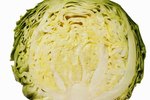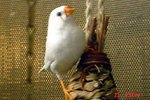Indian ringnecks are parakeets in the parrot genus Psitticula. This friendly, intelligent bird is a popular pet thanks to beautiful plumage, an upbeat personality and a size that is easy to handle. Although they don't get along well with many other species of birds, Indian ringnecks require only straightforward basic care and are suitable for beginners as long as they have been raised around humans.
Home Sweet Cage
The larger the cage you can provide, the better it is for your bird's health and happiness. At a minimum, he should be able to turn around and flap his wings without either wing or the tail feathers touching the sides. This means the cage should be at least 24 inches wide, 18 inches deep and 36 inches tall, but bigger is better. The bars should be close enough together that the bird cannot stick his head through the space between wires. Since a clean cage is vital for your bird's health, look for models that are easy to clean and have removable bottom trays and doors that open wide for easy access. Also, choose one with a door latch that your bird cannot open -- or add a door lock. Ringnecks are intelligent enough to figure out how to open simple cage latches.
What's for Dinner?
Variety is essential for your Indian ringneck's health. Commercial seed mixes and pellets made for small to medium-size birds should form the basis of the diet and ensures that your bird receives essential nutrients. It may be necessary to alternate feeding pellets and seeds rather than mixing them together so your bird won't pick through and eat only his favorites. Supplement his diet with plenty of fresh fruits, vegetables, grains, legumes and nuts, such as corn, rice, pasta, carrots, kale, squash, apples, bananas, grapes, pears and dandelion greens. He should also receive some protein each week, such as a small piece of chicken, boiled egg, beans or nuts. Don't give your ringneck avocado, chocolate or anything that contains caffeine.
Quality Bonding Time
In general, Indian ringnecks are not cuddly or fond of being handled, but this doesn't mean they aren't friendly. In fact, if you neglect your ringneck and don't spend enough time with him, he is likely to act out and cause trouble. Spend time each day talking to and interacting with your bird. You can teach him simple tricks, such as untying knots, mimicking sounds or "dancing." If your bird enjoys sitting on your shoulder, you can spend time together by letting him sit on your shoulder or the back of your chair.
Alone Time
Since you can't spend every minute of the day with your bird, it's important to give him plenty of options for entertaining himself. Ringnecks are known for their love of chewing, so make sure he has plenty of bird-safe toys for chewing, such as untreated blocks of wood or shells. He should also have several perches, balls, ropes or other moving objects, as well as ladders or branches to climb.




